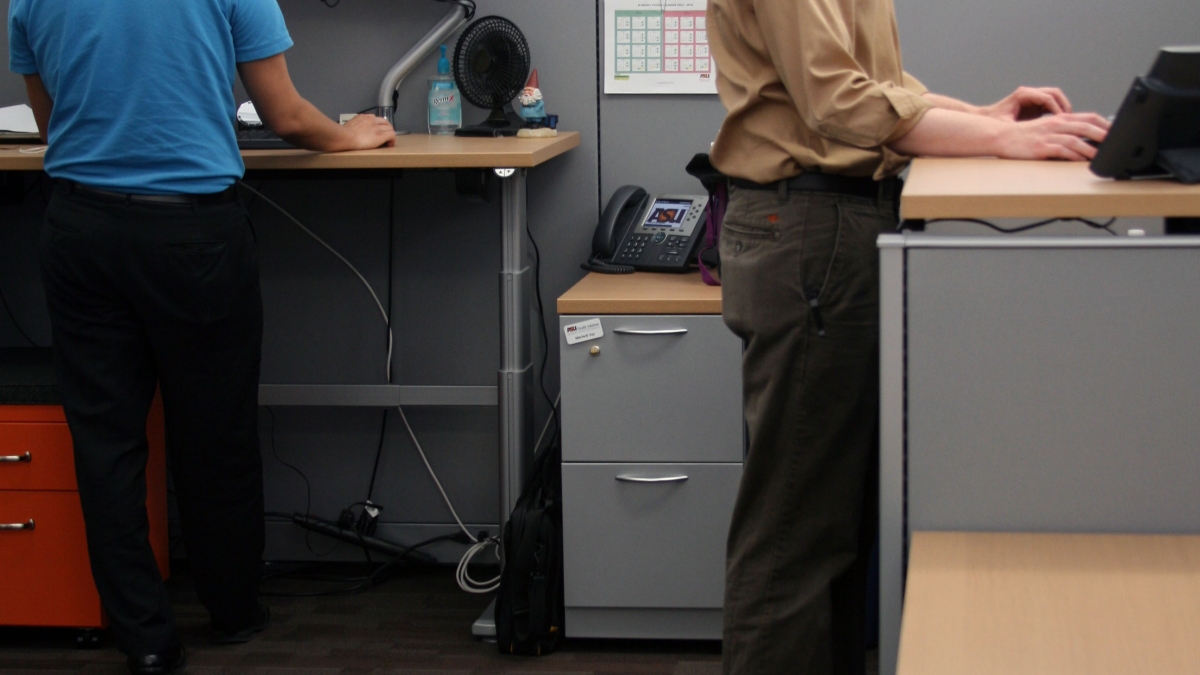ASU exhibits healthier outcomes by thoughtful office design

Arizona State University’s College of Health Solutions and College of Nursing and Health Innovation are working together to create a healthier environment in support of research about health and the dangers of sedentary lifestyles in the workplace, which has been revealed by such ASU faculty members as Healthy Lifestyles director Glenn Gaesser and international obesity expert James A. Levine.
Recent studies show that office-based workers spend about 80 percent of their workday sitting, which can create health risks for office-based workers over time – including cardiovascular disease, diabetes, obesity, premature death and other risks, which exercise cannot negate.
This month, team members from both colleges will be relocating to new offices at the Nursing and Health Innovation II building in Downtown Phoenix, which will inspire workplace productivity and wellness through design and collaboration. These new offices will be outfitted with height-adjustable, sit-to-stand desks and will also have three walking workstations available for use. The open layout will create a transparent and inviting environment.
“We had a few guiding principles when designing the space, which included the prevalence of natural materials and natural light, an environment conducive to interprofessionalism and collegiality, and the overall flow of the space, which is meant to be welcoming to everyone who visits,” said Melanie Burm, chief operating officer in the College of Health Solutions. “Additionally, we found that not only can these changes be a health saver, but they can actually be a cost saver too.”
The project was an opportunity for the colleges to collaborate with businesses such as Capital Projects, Smith Group, Steelcase, Target Commercial Interiors and the ASU Office of the University Architect, to develop a comprehensive solution to reduce sitting time and increase activity in the workplace. Steelcase will be evaluating workplace productivity and wellness to analyze its feasibility to implement the plan to a wider audience and impact health and productivity elsewhere.
The move also presents an opportunity for ASU students to study the impact of the new work environment on team members. Exercise and Wellness graduate student Anna Park is leading a "Sit and Stand" study, which will determine what impact – if any – standing while working and using a walking workstation has on an individual’s overall health. Research results will be ready later this year.